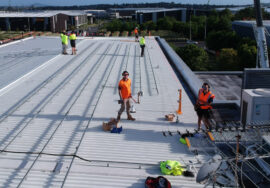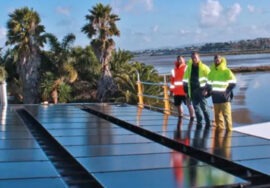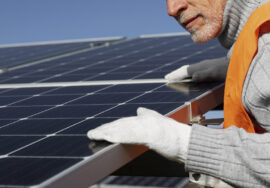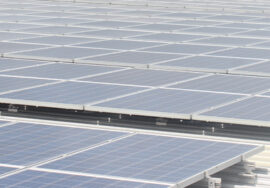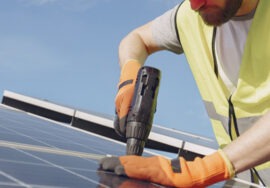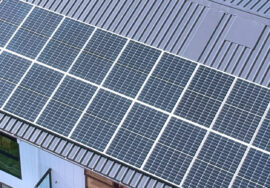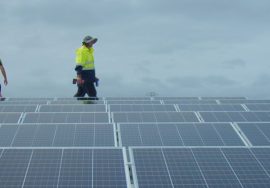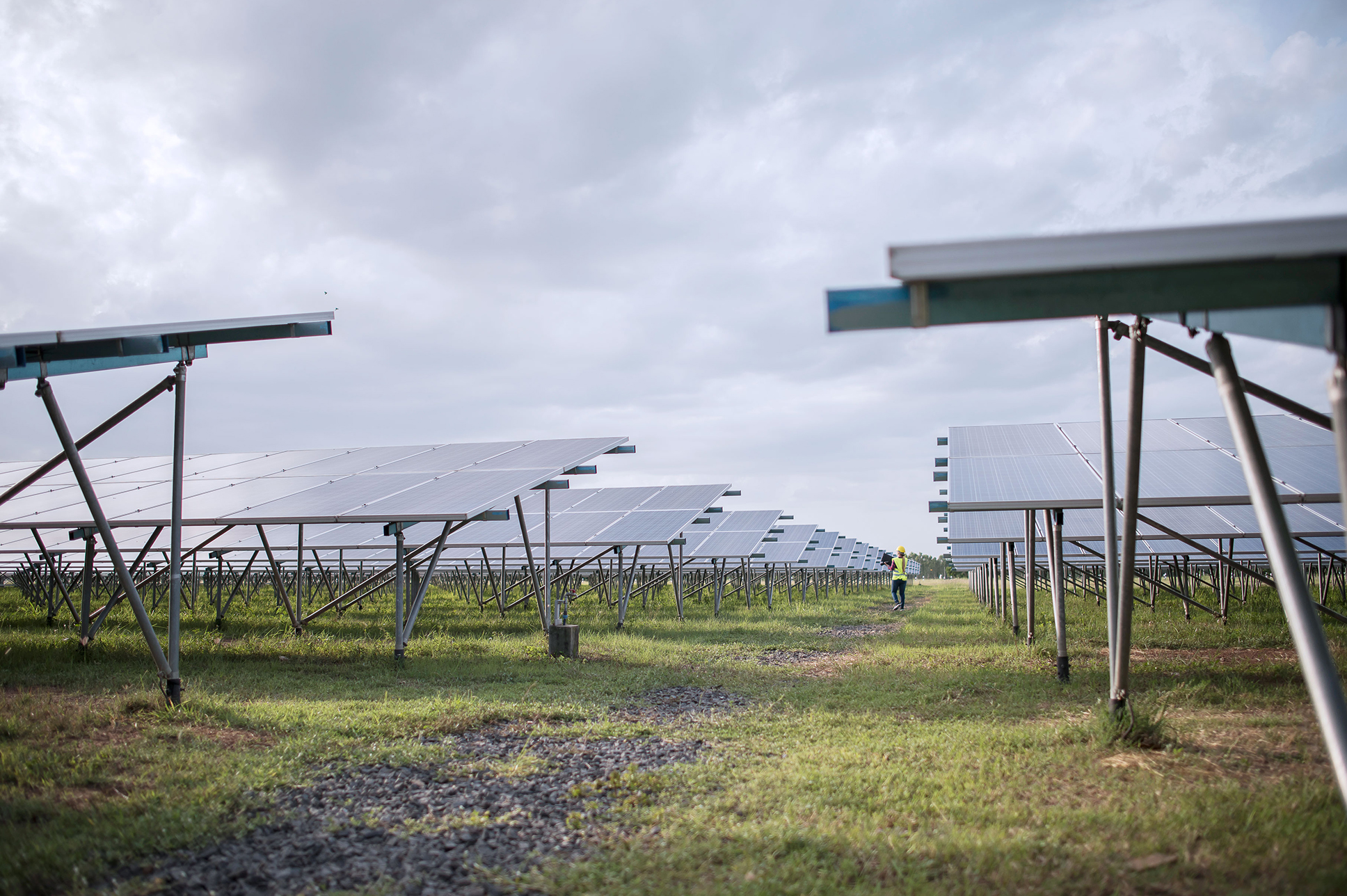
Solar panel efficiency: The gap between the most efficient solar panels narrows in 2021
#solarpanelarticle
#solarindustrynews
SunPower has long held the title of the most efficient solar panels on the market. They are undoubtedly an excellent American solar company, and their 22.8% efficiency solar panels still remain at the top of the rankings in 2021.
But, it seems that SunPower is starting to lose its lead, as other leading manufacturers are starting to catch up. Now there are at least 10 other Tier 1 solar panel manufacturers with panel efficiency ratings above 21%. So what does that mean for SunPower, and more importantly, what does that mean for your solar buying decision?
Before we get into that, let’s first look at the 2021 rankings for the most efficient solar panels offered by the market’s leading solar manufacturers. I’ll then go over some of the basics of solar panel efficiency, like what it means, how we measure it, and how much it actually impacts the amount of electricity your solar system generates. We’ll also take a look at some real-world factors that can affect how efficient your solar panels actually are when they’re on your roof, rather than just the spec-sheet efficiency that is measured in a lab.
Table 1. Most efficient solar panels in 2021
| # | Manufacturer | Model | Efficiency | Wattage |
| 1 | SunPower | A-Series SPR-A425-G-AC | 22.80% | 375 W |
| 2 | LG Solar | NeON R Ace LG375A1C-V5 | 21.70% | 380 W |
| 2 | REC Group | REC Alpha Series 380AA | 21.70% | 560 W |
| 4 | Upsolar | Mono 182 UP-M560MH | 21.60% | 550 W |
| 5 | LONGi | Hi-Mo 5m LR-72HPH | 21.50% | 665 W |
| 6 | Canadian Solar | HiKu7 Mono Perc CS7N-665MS | 21.40% | 550 W |
| 7 | JA Solar | JAM72S30/MR | 21.30% | 410 W |
| 7 | Risen Energy | Titan S RSM40-8-4-410M | 21.30% | 550 W |
| 9 | Panasonic | Evervolt EVPV370 | 21.20% | 370 W |
| 10 | Seraphim | SIV Series SRP-540-BMA-HV | 21.13% | 540 W |
| 11 | Jetion | Jenius III JT545SGh | 21.10% | 545 W |
| 12 | Trina Solar | TallMax TSM-DE15M(II) | 20.90% | 420 W |
| 12 | Suntech | Ultra S STP455S-B72/Vnh | 20.90% | 455 W |
| 12 | S-Energy | SN72 Half-Cell M6 Mono | 20.90% | 455 W |
| 15 | Yingli | YLM 120 Cell YL380D | 20.86% | 380 W |
| 16 | Axitec Solar USA | AXIpremium XL HC AC-450MH | 20.70% | 450 W |
| 17 | QCells | Q.PEAK DUO BLK ML-G9+ | 20.60% | 385 W |
| 18 | Solaria | PowerXT®-370R-PD | 20.50% | 370 W |
| 19 | Jinko Solar | Eagle 66TR G4 | 20.43% | 370 W |
| 20 | CSUN | CSUN410-144M | 20.31% | 410 W |
The table above lists the highest-efficiency solar panels currently available in the U.S.
Right now, SunPower manufactures the most efficient residential solar panel on the market, the Series A, which boasts a whopping 22.8% efficiency rating.
The solar panels listed here are flagship models for their respective brands, and thus command higher price tags. Accordingly, keep in mind that your solar panel installation could end up costing you more money if you plan to use these high efficiency panels.
What is solar panel efficiency?
Solar panel efficiency is a measure of the percentage of sunlight energy that hits the surface area of a solar panel that the panel is able to convert into usable electricity.
The higher the efficiency rating, the more electricity the solar panel is able to produce from the amount of sunlight that falls on your roof. So, if a solar panel has an efficiency rating of 15%, that means 15% of the energy within the sunlight that hits the solar panel will be converted into electricity.
How is solar panel efficiency calculated?
When you’re shopping for solar panels, the efficiency rating will be listed on the panel’s datasheet. But how exactly is that efficiency rating calculated?
All solar panels are tested at an operating temperature of 25°C with solar irradiance (or the amount of sunlight hitting the panel) of 1,000 watts per square meter. These are called Standard Test Conditions, or STC for short.
So, to find the efficiency of a panel under STC, divide the power rating by the area of the panel times the irradiance, times 100.
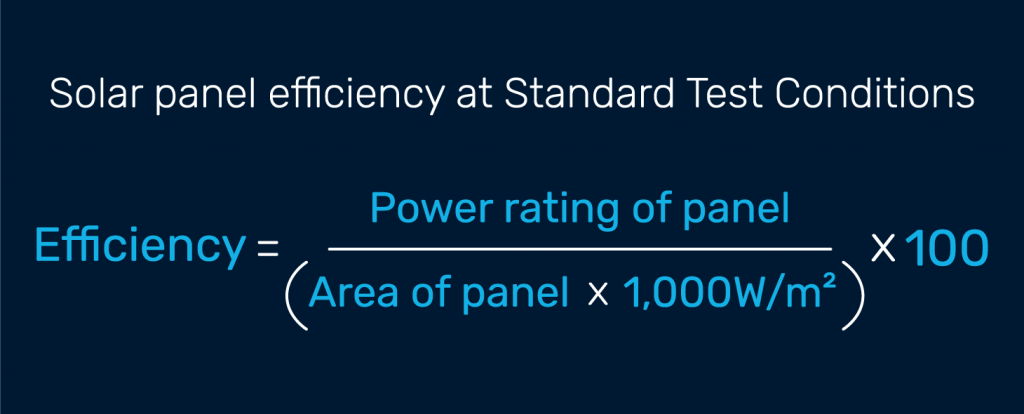
But the solar panels on your roof won’t be operating under STC. In the real world, the irradiance level and temperature will vary and change your panel’s efficiency.
How solar cell technology determines panel efficiency
Each solar panel is made of a number of individual silicon solar cells wired together. Different types of solar cells have different efficiencies, and companies continue to research and develop different methods so they can have the most efficient solar panels on the market.
While there are a number of different materials that solar cells can be made from, all of the most efficient panels on the market in 2021 use some type of monocrystalline silicon solar cell technology. Most companies that have exceed 20% solar efficiency have done so using one or more of the following advancements in monocrystalline technology:
PERC Solar Cells: Passivated Emitter and Rear Contact, more commonly referred to as PERC cells, were first developed in Australia back in 1983. Essentially, PERC cells are monocrystalline solar cells with a reflective back layer that reflects any light that may pass through back into the cell so it can extract more energy. PERC technology only provides about 1% of added efficiency, but it is a relatively cheap advancement, so companies can boost their efficiency without adding much to the manufacturing costs.
HIT Solar Cells: Heterojunction with Intrinsic Thin Layer cells, or HIT cells, is a traditional monocrystalline solar cell that is sandwiched between layers of amorphous thin-film silicon. Amorphous silicon is able to utilize the light spectrum differently than the monocrystalline layer so in total slightly more electricity can be produced.
Originally developed by Sanyo, it was then sold to Panasonic and is the reason that Panasonic is constinstely near the top of the leaderboard in terms of efficiency. Recently, REC Solar has also released a panel with an impressive 21.7% efficiency rating using this technology.
Multi-busbar Technology: Some manufactures have found that using super thin wires to collect the electricity generated within the cells actually reduces shading on each cell, providing small efficiency gains.
Split Cell Technology: Many manufactures split their solar cells in half in order to reduce heat and resistance within the cells which leads to small efficiency gains. Manufacturers like Canadian Solar and LONGi Solar have used split cell technology to achieve efficiencies around 21%
How efficient are solar panels in 2021?
According to the US National Renewable Energy Laboratory (NREL), most solar panels on the market are between 15% and 20% efficient. But, what we’re seeing now in 2021 is that more solar manufacturers than ever have solar panels with quoted efficiencies over 20%.
In fact, there are more than 20 solar manufacturers with efficiency ratings over 20%, and at least 10 manufacturers with efficiencies over 21%, narrowing the gap between SunPower’s market-leading 22.8% efficient panels and their competitors.
Tier 1 Chinese solar panels now offer high efficiency at a lower cost
Premium efficiency solar panels like SunPower, LG, and Panasonic have always come at a higher price than standard efficiency panels. But, that’s all starting to change, as there are now several new Tier 1 Chinese solar companies that offer high-efficiency solar panels at a very low cost.
To give you an idea, at the wholesale level before installation, SunPower, LG, and Panasonic panels cost around $0.80 per watt. Some of their most efficient models are sold for as high as $1.00 per watt. Chinese solar manufacturing giants like Canadian Solar, Trina Solar, and LONGi, on the other hand, are now offering panels with efficiency ratings over 20% for about $0.40 per watt.
And these Chinese-owned companies are by no means back-alley manufacturers – they have some of the largest, most technologically advanced solar panel production facilities in the world. Canadian Solar, Trina Solar, and LONGi each manufacture more than 12 gigawatts (GW) of solar panels per year, while SunPower produces just 2.5 GW.
This means that solar is not only cheaper than ever, it’s also more efficient than ever. The cheaper Chinese panels also beg the question: will the big three premium manufacturers be able to hold onto their price premium? This could particularly be an issue for SunPower, as their IBC cells are said to be more expensive to manufacture which could be a reason why SunPower chose to spin off its manufacturing business, Maxeon Technologies, in 2020.
How efficient are solar panels in real-world conditions?
The efficiency quoted for each model of solar panel is calculated at Standard Test Conditions. However, in the real world solar panels seldomly operate in such conditions. In real-world conditions solar panel efficiency is impacted by things including:
Temperature
Ironically, despite the fact that they make energy from the sun, solar panels actually operate better at colder temperatures.
As solar panels get hotter, the current increases while the voltage decreases, causing the overall output of the panels to drop. This means your solar panels will operate the most efficiently in the winter, even though they’re getting less sunshine and making less overall power.
When we say ‘temperature’, we don’t mean the temperature on your weather app. We’re talking about the cell temperature within the solar module itself. The surface temperature does have to do with the weather, as your panels will get much hotter under the summer sun than they will on a winter afternoon.
The amount by which the output of a panel reduces with heat above 25°C is referred to as the temperature coefficient. A smaller temperature coefficient means the output of a panel is less affected by extreme heat. SunPower and Panasonic have panels with the lowest-temperature coefficient on the market.
Dust, dirt, and other debris
Solar panels are exposed to the elements, which means they’ll get dirty. If there is dust or dirt on your panels, less sunlight will be reaching the solar cells and they will be less efficient.
Cleaning solar panels regularly is a great way to ensure they are operating as efficiently as possible.
Is it still worth paying a premium for the most efficient solar panels?
If you have a limited amount of space on your rooftop where solar can be installed, premium efficiency panels may be the best solar panels for your home. This is because they may allow you to install more solar generation capacity than you may otherwise be able to install on your roof.
However, there no longer seems to be a strong argument to pay a price premium for SunPower, LG or Panasonic solar panels given that the other Tier 1 solar panels are now almost as efficient and these manufacturers are also highly bankable companies.
The wider availability of cheap high efficiency Tier 1 solar panels makes it more important than ever to get quotes from multiple solar installers. By getting more than one solar quote, you can compare various manufactures at different price points to make sure you’re getting the best solar system for your home – without breaking the bank. You can also use our solar panel calculator to get a personalized estimate of how much a solar installation would cost for your specific home.
Source: solarreviews.com
ABOUT TRILECT SOLAR
Trilect Solar is a division of Trilect Services, New Zealand’s master electrician since 1997.
We are members of the Sustainable Energy Association of New Zealand (SEANZ) which offers additional peace of mind to our customers.
Trilect Electrical Services is a large electrical service company which is a member of the Master Electricians & Mastercraft network with 40 employees and a 20+ years history of customer satisfaction.
We do not use sub-contractors. All of the installations will be carried out by our experienced team.
Trilect Solar offers a customised energy plan that works for your home/ business.
Get started now by booking a free on-site consultation.
Request Your On-site Consultation
Or call us on (09) 271 2493

